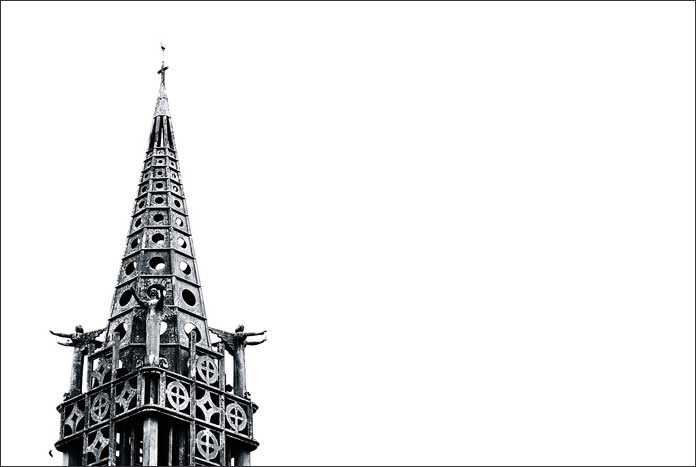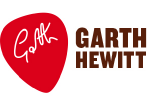It's the end of week 4 – nearly 800km down.
Only 2,400km to go.
We set off from Arras and journey down the First World War’s Western Front – following the path of the earliest battles in 1914/15 and advances and counterattacks of 1917/18.
We travel down from Arras to Peronne and on to the Chemin Des Dames, before leaving the front just east of Rheims at a cemetery for those who died defending the city.
Our first reminder of the past is a 2-foot long shell lying in the path, one part of the annual Iron Harvest that had been recently thrown there after the farmer had ploughed his field. In France alone there are 900 tonnes of shells, bullets and barbed wire harvested each year. It is said that 1 tonne of ordinance was fired for each square metre of territory on the Western Front and 1/3 never went off – a constant deadly reminder.
We walk through village after village and town after town that had been destroyed and rebuilt – past Art Deco church spires of incredible ornateness rebuilt in the 1920’s fad for reinforced concrete. Too often they suggest a thriving church below but are in fact a façade from a longing to rebuild shattered lives and shattered communities.
Our first reminder of the past is a 2-foot long shell lying in the path, one part of the annual Iron Harvest that had been recently thrown there after the farmer had ploughed his field.
Amidst this there is the Art Deco beauty of the church at Martigny Coupeirre – with its beautiful tower, staggering murals, coloured windows and a Gaudiesque altar rail I long to kneel at. But it's the weeping angels on the spire near Savy that stand out most, as they survey the fields around them and unlike the Doctor Who characters, they refuse to hide their eyes to so many deaths – another reminder of what we choose to forget.
And we walk past so many cemeteries – Commonwealth graves with dignified beauty, the ordered lines of headstones, flowers and commemoration stones for so many soldiers regimented but unknown, beautifully tended but rarely visited. French Cemeteries with rows of concrete crosses – occasional headstones with Islamic text and oriental design for North African troops and ossuaries containing the bodies/body parts of thousands who were reburied from cemeteries that had been destroyed by advancing shell fire.
And one day after an hour’s silence on the walk we came to the German cemetery of Sapignies. Some of our group failed to see it tucked behind a fence and the rows of black crosses with four names on each one. 80% of German dead have no known graves and amidst these graves, there are headstones to young Jewish soldiers who died fighting for Germany.
But it's the weeping angels on the spire near Savy that stand out most, as they survey the fields around them and unlike the Doctor Who characters, they refuse to hide their eyes to so many deaths – another reminder of what we choose to forget.
On the first day of week 3, we detour from our route to visit Theipval and the overwhelming lists of unfound dead – 72,000 from the Somme alone. On the last day, we come on our rest day in Chemin de Dames. We walk in past the ruined remains of Vauclair Abbey and the infamous road that commemorates four wars between the same foes.
The statue commemorating the Napoleonic victory in 1815, the Fort De Malmaison from the Franco-Prussian war of 1870 and the German cemetery containing 5,000 dead soldiers from WW2. I stand by the graves of two Zimmerman's and wonder about their ethnicity and can’t help but sing 'that the answers are blowing in the wind'.
And then further down the road, the ¼ of a million French casualties from the 1917 offensive that brought the French army to its knees – the subterranean Dragons Lair that garrisoned German and French troops, the memorials and the Craonne arboretum that marks the village that was completely destroyed in 1917.
I stand by the graves of two Zimmerman's and wonder about their ethnicity and can’t help but sing 'that the answers are blowing in the wind'.
And the impact of each cemetery does not lessen but adds and adds and the overwhelming futility of war and shattered lives grows. I think of the similarities to Mosul and Aleppo and the almost casual violence of the Saudi attack on Yemen and our refusal to stand up for anything other than a new trade agreement with Saudi Arabia.
And yet, each day I am struck by how our rush to Brexit missed the marvel of peace in Europe, as we hold to some glorified view of Halcyon Britain. Rupert Brooke’s words from 'The Soldier' had followed me during the first week walking through Kent as we strolled ‘under an English Heaven,’ but here his glamorised view of war keeps butting up against this grim reality and the words of German poet Erick Fried... "It has happened / and it goes on happening / and it will happen again / if nothing happens to stop it".
It has happened
and it goes on happening
and it will happen again
if nothing happens to stop it
And if these words and graves were not enough to remind me of why we walk (we do so to mark the centenary of the Balfour Declaration, that was drawn up in response to the disaster of the Western Front, and in penance for Britain’s colonial failings), then the days we spend walking by canals, provide me with a visual metaphor for Palestine that I cannot shake off.
The frequent ripples on the surface suggest a current and steady flow, yet there is no movement – it is completely stationary. I can’t help but feel that all the rhetoric, development money and politics are like eddies on the surface that hide the fact that this is an unmoving injustice. An injustice that just gets worse and worse and that our governments resolutely refuse to go below the surface and to initiate the changes that Israel/Palestine, the Middle East and the whole world
There were also so many moments of laughter, beauty and joy as well as far too great a fixation with feet. My personal highlights included listening to the Lions (rugby) win in Wellington, while walking to Hemonville in the teaming rain, to find our own room of requirement.
Having been told that there was no café, a shocked restaurateur finally caved in when we asked for 6 coffees and 6 hot chocolates to take away and pointed us to a fantastic café and shop selling metalware and vintage goods set up a by a Dutch couple. This was in the building next door to the church porch we were huddling in to get out the rain.
Their welcome transformed the day. They lit the fire and told us to spread out our wet clothes over their beautiful furniture, provided coffee and chocolate and cake and then, I can only think ironically, put Edith Piaf on their turntable ‘Non, je ne regrette rein’. I hope to go back and stay there one day and show my history-loving daughter the area, but I am sure it will not exist; it only appears when you are in real need.
Having been told that there was no café, a shocked restaurateur finally caved in when we asked for 6 coffees and 6 hot chocolates to take away.
Johnny Cash’s eulogy to St Quentin prison ran through my head for an entire day. Three of us, all over 6ft 2 in, stayed in a room the size of a walk-in cupboard in the town that shares a name with the prison he performed in, and then having left we had to return in a tow truck, as our car was taken to a local garage after another driver had totalled the driver’s door.
A definite highlight was Steve and Rod’s grace as our drivers, as they sorted our logistical issues, lugged bags around and provided the copious quantities of bread and cheese every day. Another was of the group climbing up the steep approach to Laon. The beautiful old city feels like an incredible tourist town 400 years after its heydey, hearing the 'wow' from our weary pilgrims as they stood in front of the huge Gothic Cathedral echoed that of pilgrims across the centuries.
The longest day’s walk was into Reims, and an even more beautiful cathedral, I stood lighting candles for Palestine and for all the logistics that dog my steps as I think ahead to Italy and Greece and Istanbul (not Constantinople). Then coming back the next morning, Sunday, and saying our daily liturgy in the empty cathedral – "tread lightly on the earth".
That lunchtime we walked through the champagne vineyards of Versenay past Moet and Chandon, Veuve Cliquot tablets that advertise the owner of the different vines. The oddity of a windmill on one hill and a lighthouse on the other did not make up for the tragedy that every vintner’s cave was closed.
The beautiful old city feels like an incredible tourist town 400 years after its heydey, hearing the 'wow' from our weary pilgrims as they stood in front of the huge Gothic Cathedral echoed that of pilgrims across the centuries.
But my absolute favourite day's walk was at the end of week four. We left at 6:30 am and finished at the beautiful 15th-century timber-framed church of Lentilles at 10:30 am. My two-week quest to see any wildlife had finally been slated as we glimpsed a deer and then walked past the tamest family of wild boar – Obelix would have had a feast.
We then drove to our accommodation in Colombey Les Deux Eglises and arrived just in time to see the caravan of the Tour de France drive through and shower the numerous spectators in useless tat. Our hotel – by far the nicest we had stayed in, was beside that day’s intermediate sprint finish, with an outside bar, a huge TV on a tow truck and presenters giving regular updates and whipping up the crowds.
We had a long view down a dead straight road to see the tour coming and in seconds they flashed past with Chris Froome in his yellow jersey, inches away from us. He was travelling at 40km an hour, and as he disappeared into the distance I realised one’s hour ride for him would be 10 hours walking for us.
















